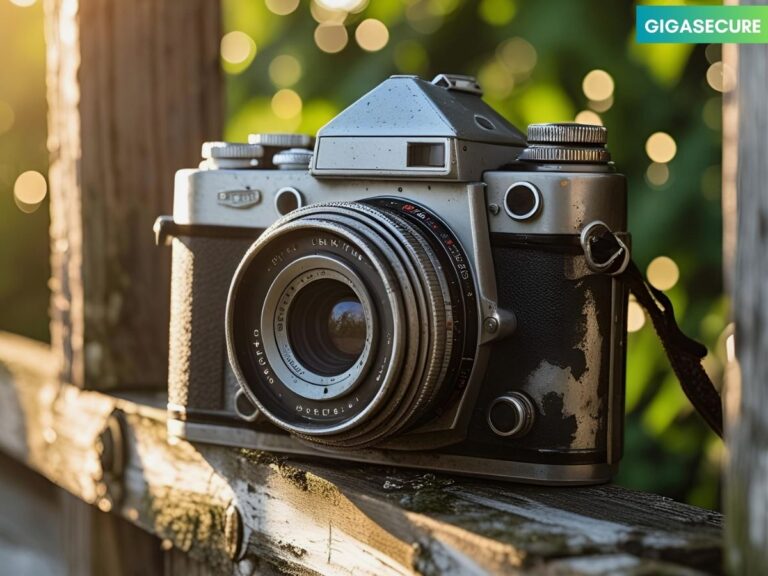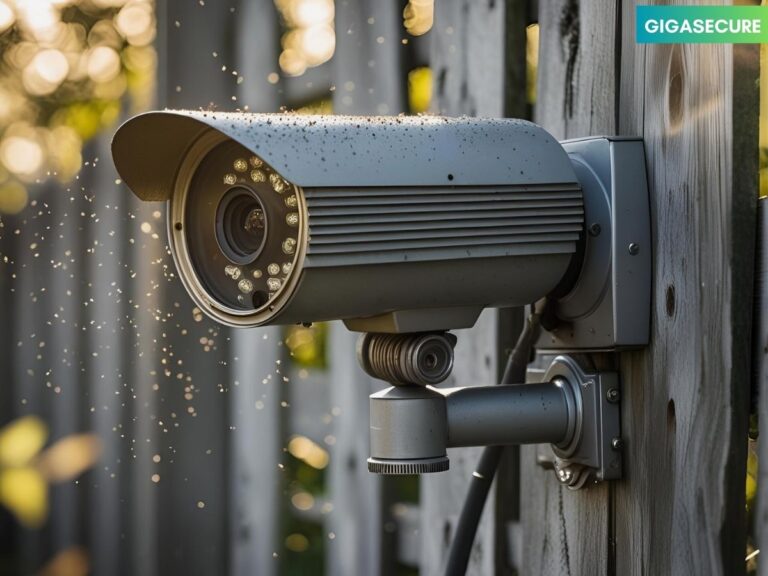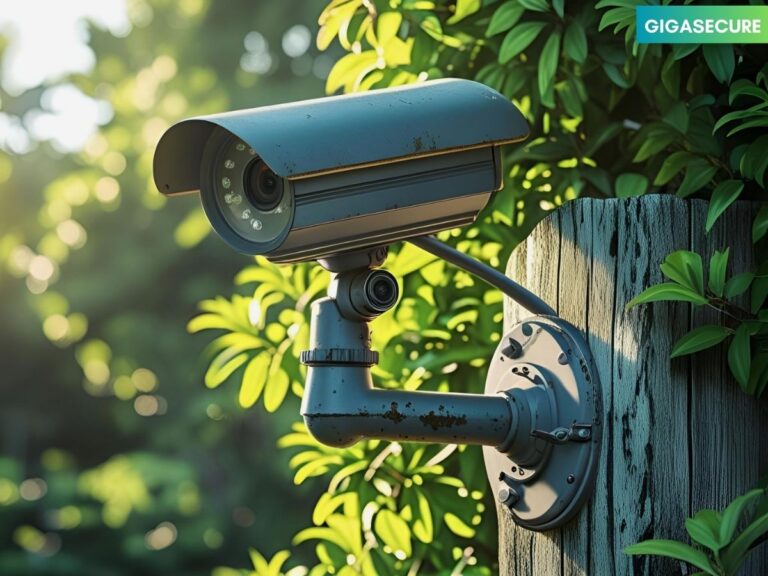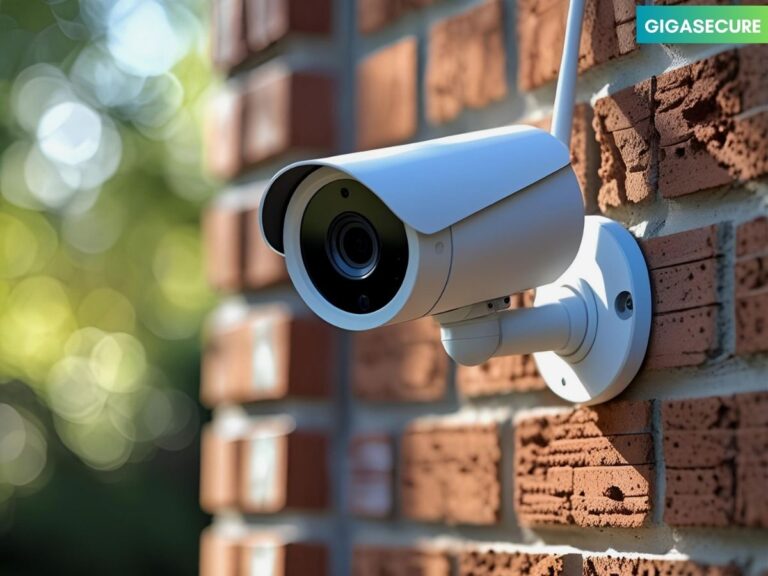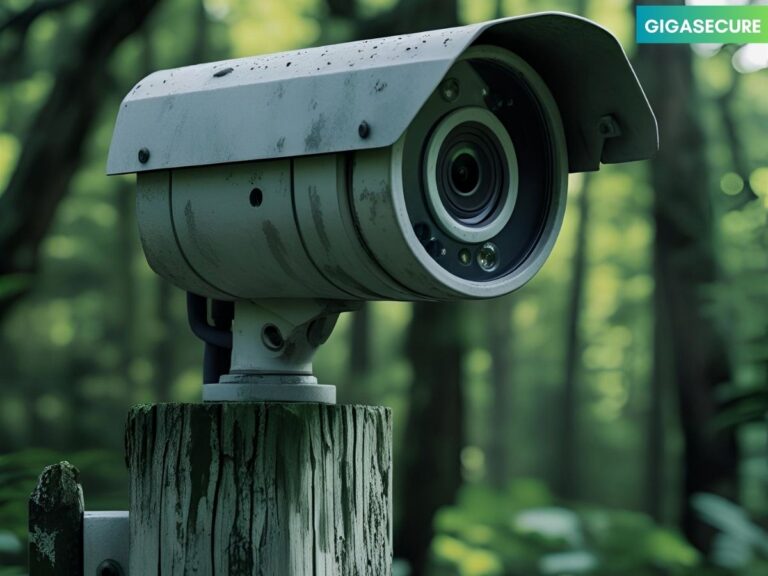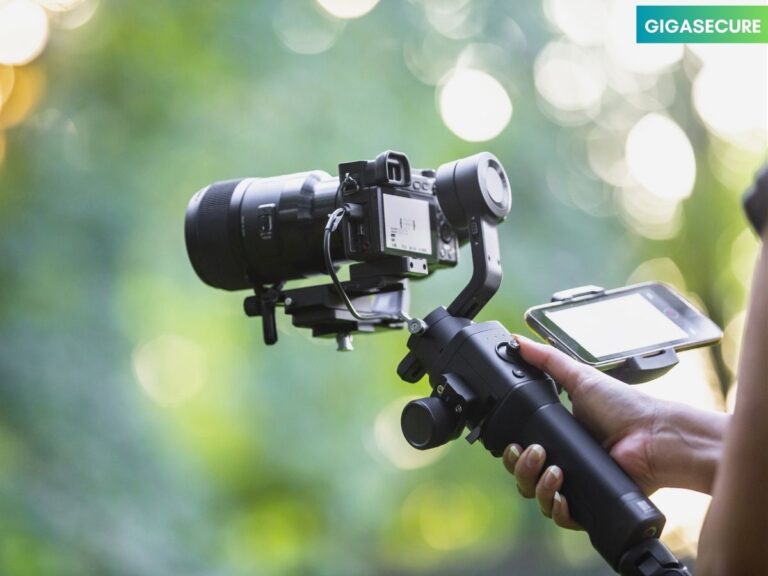Best Lens Types for Outdoor Security Cameras
Having the right outdoor security camera is key to keeping your home or business safe. I’ve seen how a good camera can give you peace of mind and help prevent threats.
Choosing the right lens is a big decision. The lens you pick can greatly affect how clear your camera’s images are. It also impacts how well it covers your security needs.
There are many lens types out there. It’s important to know their benefits and find the best one for your security needs. In this article, I’ll help you pick the perfect lens for your outdoor security camera.
Key Takeaways
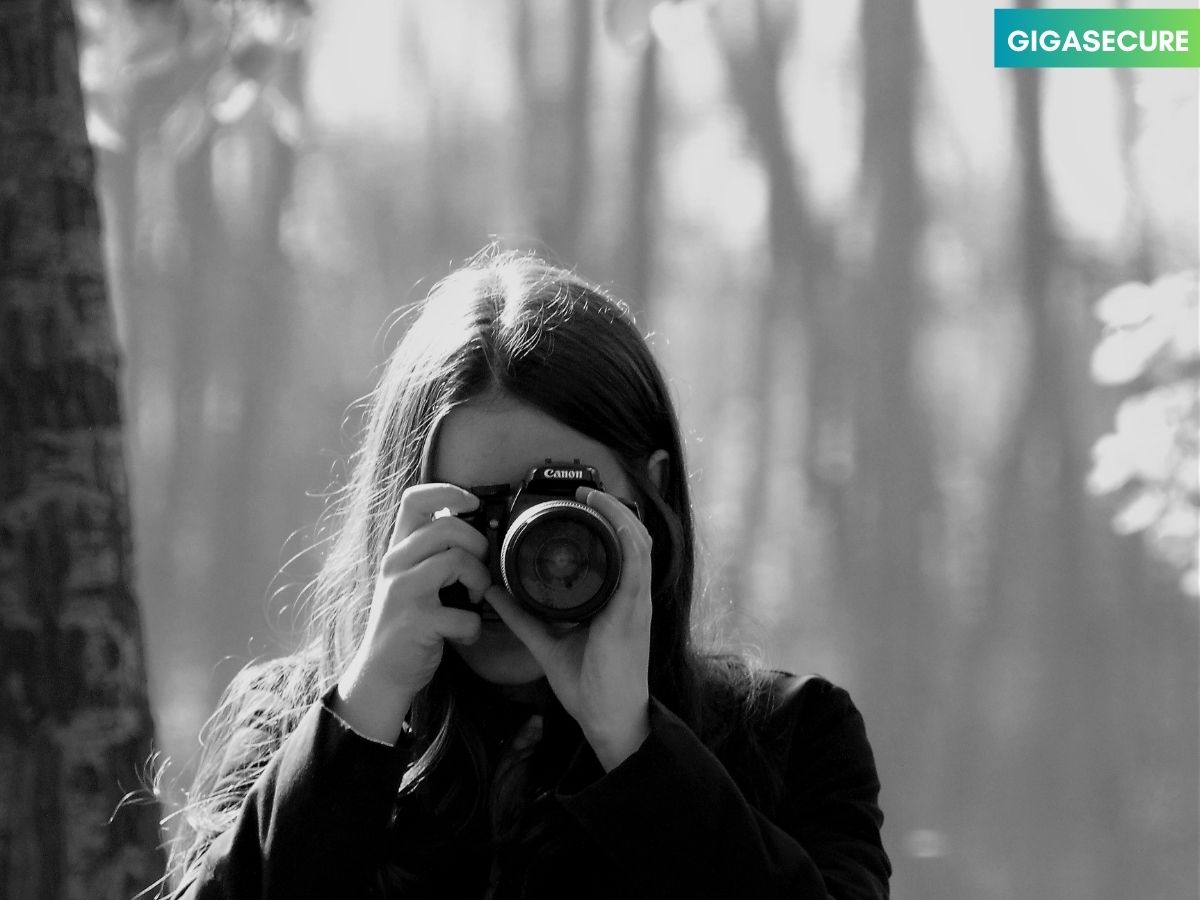
Understanding Security Camera Lens Basics

The lens of your outdoor security camera is key to its performance. It’s not just a part; it’s vital for clear images in different conditions.
What Makes Outdoor Lenses Different
Outdoor lenses are tougher and weather-proof than indoor ones. They handle extreme temperatures, moisture, and dust well. Weather-resistant coatings and durable materials make them stand out.

| Lens Feature | Description | Benefit |
|---|---|---|
| Weather-resistant coating | Protects the lens from moisture and extreme temperatures | Ensures durability and longevity |
| Durable materials | Made from high-quality materials that can withstand environmental stressors | Reduces maintenance and replacement costs |
How Lens Types Impact Security Coverage
The lens type affects how much area a camera can see. Wide-angle lenses cover more, while telephoto lenses focus on far-off objects. Choosing the right lens type is key for good coverage.
The Relationship Between Lens and Image Quality
The lens greatly affects image quality. Brightness, clarity, and distortion depend on it. A good lens means sharper, clearer images. Investing in a good lens is vital for quality footage.
Fixed vs. Varifocal Lenses: Which Is Right for You?
It’s important to know the difference between fixed and varifocal lenses for your outdoor security camera. Choosing the right lens is key to a good surveillance system. This choice affects how well your camera works.

Fixed Lens Advantages and Limitations
Fixed lenses are simple and reliable. They have a fixed focal length that can’t be changed. Their benefits include:
- Reliability: Fixed lenses are less likely to break because they have fewer parts.
- Cost-effectiveness: They are cheaper than varifocal lenses.
- Image Quality: They can offer better image quality because they are made for a specific view.
But, fixed lenses have some downsides. They can’t be adjusted, so changing the camera’s view requires physical changes or a new lens.
Varifocal Lens Benefits and Drawbacks
Varifocal lenses are flexible, letting you change the focal length as needed. Their benefits are:
- Flexibility: You can adjust the focal length without changing the lens.
- Adaptability: They’re great for changing surveillance needs over time.
But, varifocal lenses have their own issues. They can be more complicated and expensive. Motorized varifocal lenses need power to work, which might be a problem in some setups.
Manual vs. Motorized Varifocal Options
Varifocal lenses come in manual and motorized types. Manual lenses need you to adjust them physically, which is cheaper but more work. Motorized lenses can be adjusted from a distance, which is more convenient but might cost more.
When picking between fixed and varifocal lenses, think about your needs, the environment, and if you’ll need to change the camera’s view later. This will help you pick the best lens for your outdoor security camera.
Focal Length Explained: Finding Your Perfect View
The focal length of a lens is key in setting its angle of view and magnification. For outdoor security cameras, picking the right focal length is vital for good surveillance.

Wide-Angle Lenses (2.8mm-4mm)
Wide-angle lenses are great for covering a lot of area with one camera. They work well for watching over big spaces like parking lots or big backyards. But, they might not show details well at a distance.
Standard Lenses (4mm-8mm)
Standard lenses strike a balance between seeing a lot and seeing details. They’re good for many surveillance needs, from homes to businesses. They offer a good angle of view, perfect for areas that are not too big but need some detail.
Telephoto Lenses (8mm-50mm)
Telephoto lenses are made for capturing far-off objects clearly. They’re ideal for spotting people or monitoring activities from afar. But, they have a narrower view, so you might need more cameras for full coverage.
Calculating Distance and Coverage
To find the right focal length for your camera, think about how far the camera is from the area you want to watch and how much detail you need. A simple formula can help: f = (distance * object width) / (sensor width * desired width in view). Knowing this formula helps pick the best lens for your needs.
| Focal Length (mm) | Angle of View | Typical Use |
|---|---|---|
| 2.8-4 | Wide | Large open spaces, broad coverage |
| 4-8 | Moderate | Residential, commercial areas |
| 8-50 | Narrow | Distant objects, detailed surveillance |
As a security expert says, “The right focal length is key to a good surveillance system.”
“The key to effective surveillance is not just about the camera’s resolution, but also about choosing the right lens for the job.”
Security Expert
Field of View Considerations for Outdoor Surveillance
The field of view is key to how well your outdoor security camera watches your property. Knowing how to pick the right field of view (FOV) is vital for full coverage.
Calculating the Right FOV for Your Property
To find the right FOV, think about the area you want to watch and how much detail you need. Consider the area’s size, the camera’s distance from it, and what you’re watching.
For example, a big parking lot might need a wide FOV, while a narrow FOV is better for seeing faces at entrances.
Key factors to consider when calculating FOV include:
- The camera’s resolution and sensor size
- The lens type and focal length
- The camera’s mounting height and angle
- The distance to the target area
Balancing Coverage Area vs. Detail
It’s important to find a balance between how much area you cover and how much detail you get. A wide FOV covers more but might not show as much detail. A narrow FOV shows more detail but covers less. You might need to change the camera’s position, lens, or resolution to get it right.
| FOV Type | Coverage Area | Level of Detail |
|---|---|---|
| Wide FOV (90°-180°) | Large areas, such as parking lots | Lower detail, suitable for general surveillance |
| Narrow FOV (30°-60°) | Smaller areas, such as entrances | Higher detail, suitable for identification |
Addressing Blind Spots in Your Security Setup
Blind spots can weaken your security. To avoid them, place your cameras wisely and use multiple cameras for better coverage. Check your camera’s FOV often and adjust as needed to keep your property safe.
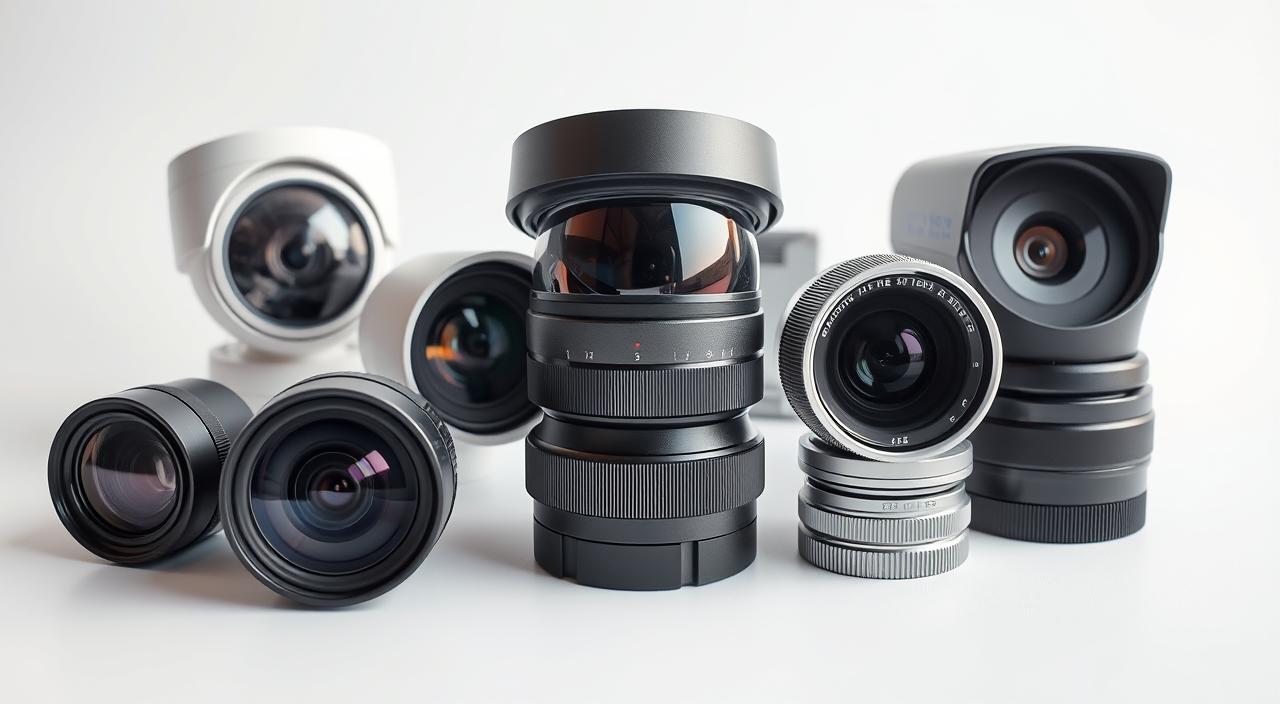
By thinking about your outdoor security camera’s field of view and making changes when needed, you can make your property safer. This ensures your surveillance system works well.
Choosing the Best Lens Type for Your Outdoor Security Camera
To get the most out of your outdoor security camera, picking the right lens is key. The lens you choose greatly affects how well the camera captures images in different situations.
Matching Lens Types to Specific Security Needs
Each security need calls for a specific lens type. For example, a wide-angle lens is great for watching over a large area. But, if you need to see details from far away, a telephoto lens is better.
- Wide-angle lenses (2.8mm-4mm) are ideal for broad coverage.
- Standard lenses (4mm-8mm) offer a balance between coverage and detail.
- Telephoto lenses (8mm-50mm) are best for capturing distant objects.
Environmental Factors That Affect Lens Selection
Things like weather, light, and obstacles can really affect how well a lens works. For example, a weather-resistant lens can keep images clear in rainy or foggy conditions.
Think about these environmental factors when picking a lens:
- Weather conditions: Rain, fog, or extreme temperatures.
- Lighting conditions: Direct sunlight, low light, or backlight.
- Obstacles: Trees, buildings, or other objects that could block the view.

Future-Proofing Your Camera Lens Investment
When investing in a camera lens, think about future needs and new tech. A motorized varifocal lens that can adjust to changing conditions is a smart choice.
“The best investment is in the tools that will last the longest.” –
Anonymous
By picking a versatile and high-quality lens, your security system will stay effective for years to come.
Advanced Lens Features Worth Considering
To get the most out of your outdoor security camera, look into advanced lens features. These can make your camera work better, giving you clearer pictures and more reliable protection.
Auto-Iris vs. Manual Iris Lenses
Auto-iris lenses change with the light, keeping images sharp day and night. Manual iris lenses need manual adjustments, which can be slow and not fit all settings. Auto-iris lenses are great for outdoor cameras because they adjust to light changes.
IR-Corrected Lenses for Night Vision
IR-corrected lenses help with night vision by focusing infrared light better. This means clearer images at night. IR-corrected lenses are key for outdoor cameras that need to see well in the dark.
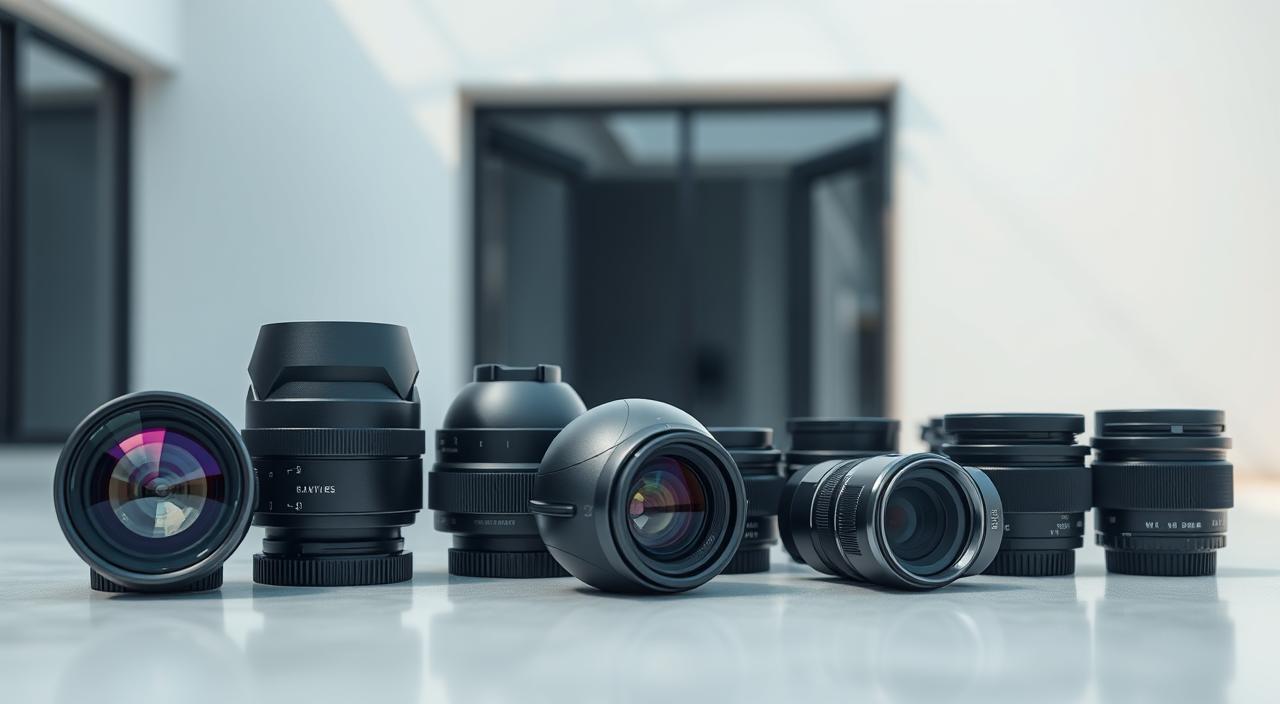
Motorized Zoom Capabilities
Motorized zoom lets you change the lens’s focus from a distance. It’s handy for watching over big areas or zooming in on details without touching the camera.
Weather-Resistant Lens Coatings
Weather-resistant coatings shield the lens from moisture and dust. They help the camera keep working well in different weather.
| Feature | Description | Benefit |
|---|---|---|
| Auto-Iris Lenses | Adjusts to changing light conditions | Optimal image quality throughout the day |
| IR-Corrected Lenses | Corrects focus for infrared light | Sharper images during nighttime surveillance |
| Motorized Zoom | Remote adjustment of focal length | Flexibility in surveillance coverage |
| Weather-Resistant Coatings | Protects lens from environmental damage | Ensures continued operation in various weather |
Budget Considerations and Value Assessment
When picking outdoor security camera lenses, keeping an eye on your budget is key. This ensures you get great value without spending too much. The lens you choose greatly affects your surveillance system’s success.

Looking at different lenses, consider their features, quality, and price. The market has many options, from basic to top-notch lenses. Each has its own benefits and drawbacks.
Entry-Level vs. Professional-Grade Lenses
Entry-level lenses are cheaper but might not have all the features you need. Professional-grade lenses offer better image quality and more features but cost more. Knowing your security needs helps decide between these two.
When to Invest in Premium Lens Options
Premium lenses are worth it if you need top-notch images and advanced features. They’re perfect for detailed surveillance, like watching over a big area. If you need precise monitoring, premium lenses are your best bet.
Cost-Effective Alternatives Without Sacrificing Quality
If you’re on a tight budget, there are affordable options that don’t skimp on quality. Look for lenses that offer good value for money. Also, keep an eye out for sales or last year’s models to save money.
By weighing your budget and security needs, you can choose wisely. This ensures you get the most value from your outdoor security camera lens.
Real-World Applications and Lens Recommendations
Choosing the right lens for your outdoor security camera is important. It depends on your property’s security needs. Whether it’s a home, business, or large estate, the lens choice varies.

Best Lenses for Residential Properties
For homes, a lens with a focal length of 2.8mm to 4mm is best. This range offers a wide view, covering more area. It's great for watching entrances, driveways, and gardens.
Optimal Lens Choices for Business Perimeters
Businesses need a different lens. A longer focal length, 6mm to 8mm, is better. It captures clear images of people and cars from far away. This helps spot security risks.
Specialized Lens Needs for Large Properties
Big properties, like estates or commercial areas, need special lenses. Varifocal lenses are flexible, adjusting to different areas. Lenses with motorized zoom also offer more surveillance options.
FAQ Of Best Lens Types for Outdoor Security Cameras
What is the difference between a fixed lens and a varifocal lens for outdoor security cameras?
A fixed lens has a fixed focal length and is simpler. A varifocal lens allows for adjustments to the focal length. This offers more flexibility in surveillance.
How do I determine the best focal length for my outdoor security camera?
To find the best focal length, think about the area you need to cover and the detail you want. Wide-angle lenses (2.8mm-4mm) are great for wide coverage. Telephoto lenses (8mm-50mm) are better for distant objects.
What is the importance of field of view (FOV) in outdoor surveillance?
The FOV shows how much area your camera can see. Finding the right FOV means balancing coverage area and detail needed.
How do environmental factors impact lens selection for outdoor security cameras?
Weather, lighting, and obstacles can change how a lens works. Weather-resistant coatings and IR-corrected lenses help with these issues.
What are the benefits of advanced lens features like auto-iris and motorized zoom?
Auto-iris lenses adjust to light changes. Motorized zoom lets you adjust the lens’s focal length remotely. This makes the camera more flexible and effective.
How do I assess the value of different lenses for my outdoor security camera?
When evaluating lenses, look at their features, quality, and price. Knowing when to spend more and when to save is key.
What type of lens is best for residential properties, business perimeters, and large properties?
The right lens depends on the property. For homes, a standard lens (4mm-8mm) works well. Businesses might need both wide-angle and telephoto lenses. Large areas might need special lenses with motorized zoom.
Can I future-proof my camera lens investment?
Yes, by picking a lens that adapts to changing needs and has features like motorized zoom, you can make your investment last longer.
Conclusion
Choosing the right lens for your outdoor security camera is key. It’s about knowing the basics, your security needs, and what features and budget you have. This helps you pick the best lens for your camera’s effectiveness.
There are many lens types for outdoor security cameras. But, by understanding fixed and varifocal lenses, you can make a better choice. Think about focal length and field of view to find the right lens for your needs.
The right lens greatly improves your security footage quality. This article has given you the tools to choose wisely. Whether it’s for your home or business, the right lens ensures your camera system works well.

